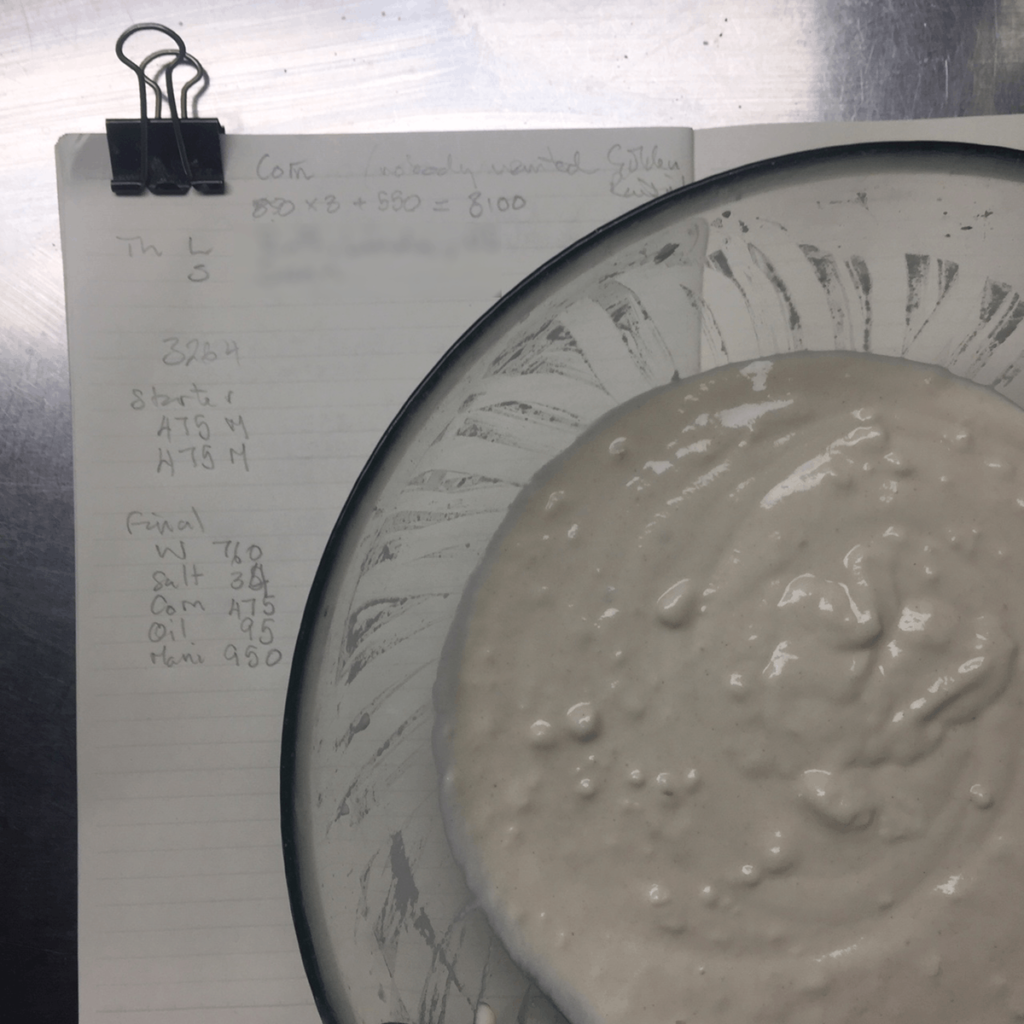I know I use the words sourdough, starter and leaven sloppily. I know which I mean when, but that doesn’t help people who are just beginning. So, I thought I would clarify with an example.
This week’s big bake will amount to 3 kg of dough, and my formula calls for 33% of that to be pre-fermented leaven. So, I need to build about 950 gm of leaven. For this particular bread, I always use the white flour starter that I keep at 100% hydration. I know that I’ve got about 100 gm of starter in the fridge, because I refreshed it just last week.

Here’s the freshly mixed first build, resting on my notebook.
So, I remove 75 gm of the starter and mix it with 150 gm of flour and 150 gm of water. 1:2:2 in ratio terms. That keeps the hydration at 100% and does not give the starter too much to chew on as it becomes the first build of leaven.
At the same time, I now have only 25 gm of starter left. I could leave it at that and stick it back in the fridge, but I refresh that too. That means adding 50 gm of flour and 50 gm of water, exactly the same ratios as the first build.

The starter, refreshed with 50gm of water and 50 gm of flour.
Both of them will stay out now for about 12 hours; it is getting cold here. Then this evening, the starter will go back in the fridge. The first build, which currently weighs 375gm, will get 290 gm of flour and 290 gm of water, takings the amount of the second build up to 955 gm, which gives me a slight excess to work with.

The refreshed starter and the first build of the leaven will now rest for about 12 hours.
Tomorrow, I’ll use all the leaven to raise the sourdough, which won’t be at all sour.